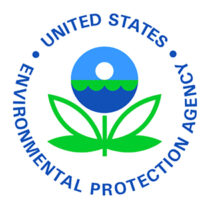Proposed Rule is First-Ever Risk Management Rule Issued Under New Process in 2016 Lautenberg Chemical Safety Act
WASHINGTON -Â Today the U.S. Environmental Protection Agency (EPA) is taking action to protect people from asbestos exposure by releasing a proposed rule to prohibit ongoing uses of the only known form of asbestos currently imported into the U.S. This proposed rule is the first-ever risk management rule issued under the new process for evaluating and addressing the safety of existing chemicals under the Toxic Substances Control Act (TSCA) that was enacted in 2016.
“Today, we’re taking an important step forward to protect public health and finally put an end to the use of dangerous asbestos in the United States,†said EPA Administrator Michael S. Regan. “This historic proposed ban would protect the American people from exposure to chrysotile asbestos, a known carcinogen, and demonstrates significant progress in our work to implement the TSCA law and take bold, long-overdue actions to protect those most vulnerable among us.â€
The proposed rule would ban chrysotile asbestos, the only known form of asbestos that’s currently imported into the U.S., which is found in products like asbestos diaphragms, sheet gaskets, brake blocks, aftermarket automotive brakes/linings, other vehicle friction products, and other gaskets also imported into the U.S.
This proposal would rectify a 1991 court decisionEXIT EPA WEBSITE that largely overturned EPA’s 1989 ban on asbestos that significantly weakened EPA’s authority under TSCA to address risks to human health from asbestos or from any other existing chemical. With the 2016 amendments to TSCA, the law was radically transformed with clear requirements and a mandate to comprehensively prioritize and evaluate chemicals and put in place strong and timely protections against any unreasonable risks.
EPA is also proposing targeted disposal and recordkeeping requirements in line with industry standards, Occupational Safety and Health Administration requirements, and the Asbestos National Emission Standards for Hazardous Air Pollutants (NESHAP). The proposed disposal and recordkeeping requirements would take effect 180 days after the effective date of the final rule.
Use of asbestos in the U.S. has been declining for decades, and its use is banned in over 50 countries. Although there are several known types, the only form of asbestos known to be currently imported, processed, or distributed for use in the United States is chrysotile. Raw chrysotile asbestos currently imported into the U.S. is used exclusively by the chlor-alkali industry. Most consumer products that historically contained chrysotile asbestos have been discontinued. In December 2020, EPA issued a final risk evaluation that found unreasonable risks to human health from conditions of use associated with six categories of products.
To address these unreasonable risks, the proposed rule would prohibit manufacture (including import), processing, distribution in commerce, and commercial use of chrysotile asbestos for six categories of chrysotile asbestos-containing products: asbestos diaphragms, sheet gaskets, oilfield brake blocks, aftermarket automotive brakes and linings, other vehicle friction products, and other gaskets. The proposed prohibition on the manufacture, processing, and distribution in commerce will also address consumer exposure to chrysotile asbestos. The prohibitions relating to asbestos diaphragms and sheet gaskets for commercial use are proposed to take effect two years after the effective date of the final rule; the proposed prohibitions relating to oilfield brake blocks, aftermarket automotive brakes and linings, other vehicle friction products, and other gaskets for commercial use are proposed to take effect 180 days after the effective date of the final rule.
Chlor-alkali chemicals are used in sectors important to the national economy and in operations that can help protect human health such as drinking water treatment, which uses chlorine manufactured through the chlor-alkali process. While chlorine is a commonly used disinfectant in water treatment, there are only 10 chlor-alkali plants in the U.S. that still use asbestos diaphragms to produce chlorine and sodium hydroxide. One plant is expected to close this year. The nine remaining chlor-alkali plants using asbestos diaphragms range in age from 40 to 123 years old and none have increased use of asbestos diaphragms in approximately 17 years. The use of asbestos diaphragms has been declining and these remaining plants only account for about one-third of the chlor-alkali production in the country. Alternatives to asbestos-containing diaphragms for chlor-alkali plants exist, and the use of alternatives, specifically membrane cells, accounts for almost half of the country’s chlor-alkali production.
In addition to addressing the significant human health effects of chrysotile asbestos exposure, today’s proposal, if finalized, is also expected to generate health benefits from reduced air pollution associated with electricity generation as chlor-alkali production is one of the most energy-intensive industrial operations. Environmental justice concerns in communities surrounding some of the affected chlor-alkali facilities and other chemical manufacturers would also benefit from reduced levels of soot and other air pollution from the electricity generation needed to support these facilities.
Separately, EPA is also evaluating legacy uses and associated disposals, other types of asbestos fibers in addition to chrysotile, and conditions of use of asbestos in talc and talc-containing products in a supplemental risk evaluation for asbestos. EPA released the draft scope for the second part of the asbestos risk evaluation in December 2021 and will publish the final risk evaluation by December 1, 2024.




